Today, gardeners and flower flowers are simply a huge number of decorative plants and colors that can be used to create a unique garden composition and bright landscape design. Experienced flowers that do not represent their lives without flowers, each new season is in constant search for new and exotic species and varieties to replenish their flower collection.
Peonies are one of the most beautiful and sought-after colors, which in their popularity can argue even with the queen of flowers - Rose. In recent years, a large number of pions varieties have been derived, among which the ITO hybrids occupy a special place. Pion Bartzell variety is one of the most valuable varieties of peonies derived in recent years, will certainly have to do with any knowledgeable flower.
In this article, consider the features and description of the hybrid of Pion Bartzell, we note the characteristics of the main options for use in the landscape of this spectacular flower. We give important rules and nuances of landing and care for Peion Bartzell.
Features and Morphological Description of Peony Bartzell
Pion Bartzell's hybrid is one of the rarest and expensive varieties that only managed to withdraw the breeders. That is why many true connoisseurs of this type of colors are ready for everything to get a unique yellow peony for themselves and their collection. These flowers have been known for over 2000 years. His name "Peon" received in honor of the ancient doctor Peon, who treated the gods themselves. The territory of China is considered true homeland of all peonies, where these flowers are very valued and revered.
Peon Bartzell was led in the 40s of the last century on the territory of Japan, where at that time he lived and diligently worked the greatest breeding agent Tiichi Ito, who devoted his whole life to the study of peonies and the removal of new species and varieties of this plant. To obtain a beautiful yellow peony, the tree-shaped peony of Kinko variety and herbaceous peony Kakoden was used. Together with his student, he spent more than 1,200 artificial crosses, as a result of which he had to highlight 6 plants with a yellow color color. However, until the end, he did not bring his work. The student of Tichi ITO and his widow continued the works on the selection of yellow peony. As a result, in 1987, the light saw ITO Pion Bartzell, who immediately at the international exhibition received the vocation of flower water and a gold reward from the American society of peonies in 2002.
Huge works Toichi Ito were not in vain, in his honor were named all hybrid varieties bred them pions. Now they are called Itoh hybrid peonies. Most of them have yellow flowers, and then sought the famous scientist. Itoh peonies - are flowers, which are composed of the lower and upper parts of the tree grass. During cold weather the top of the dies, and the bottom is long-term and can tolerate even severe frost. Today, scientists around the world are trying by Ito hybrid peonies bring new varieties with different colored flowers: apricot, purple, white, pink.
The name of the pearl collection Toichi Itoh peony Bartzella was in honor of a family pastor Japanese breeder of Bart surname.
peony Bartzella Description:
- Peony Bartzella - is the brightest representative of the group Itoh peonies hybrids, which has a high decorative and great value. Due to the high cost of the peony is important to clearly think through all the nuances of planting and caring for plants, so nothing is not to spend money and time.
- plants root system shallow, fibrous. It is growing rapidly and tightly held in the soil. Despite the fact that the peony roots are close to the surface, it has no effect on cold hardiness of plants.
- Outline peony Bartzella only half as well as the upper part of the grassy stems. This is directly related to the origin of the variety.
- peony stalks have a solid structure, they are quite thick and the lower part of lignified. All this contributes to the fact that Bush looks very compact and beautiful, shoots do not need the support and garter.
- The plant in this class can reach a maximum height of 90-100 cm diameter flowering bush may also be an average of 70-90 cm.
- The upper part of the stem is herbaceous structure, and with the onset of winter, they die completely. It is represented by a very beautiful and decorative leaves dark green saturated hue. According to its structure melkorassechennaya sheet plate, large enough, it has a leathery surface.
- Peony leaves Bartzella almost to the very cold weather do not lose their decorative effect.
- The main decoration and the value of the pion - flowers, which are very beautiful and rich lemon yellow color. It is this color has always sought a Japanese breeder Toichi Ito.
- The flowers are very large in diameter may be 20-30 cm. They consist of a large semi-double petals lemon hue. The middle of the flower is red or pink hue.
- On one plant can simultaneously fly to 20 large colors, which are spectacularly towering over foliage. Thanks to this, the grade looks even more beautiful and unique. It is important to take into account the fact that the older the plant becomes, the more colors it blooms on it.
- The flowering of yellow Bartzella Peon begins in about mid-June and lasts almost a month with a continuous dissolution of buds.
- Flowers have a pleasant and unobtrusive aroma, which attracts a large number of bees and other insects.
- The colors of the peony of this variety in the cut can stand much longer than all other representatives of the kind.
- Pion Bartzella variety has good cold resistance, the plant can withstand frosts up to minus 30 degrees. This fact allows you to grow decorative variety throughout Russia. In addition, the plant has sustainability to many viral and fungal diseases with the proper compliance with all rules of cultivation.
- One of the important and valuable features of the Bartzella Peony is the rapid restoration of corn-damaged parts. Even if the plant is frozen a little, with the arrival of heat it is quickly starting to recover.
- In addition, this flower will delight gardeners with his unpretentiousness and not capriciousness in care, it does not need to create certain conditions under it.
Use of Pion Bartzell in Landscape Design
Yellow Piron Bartzell, like other varieties of this plant, has incredible decorativeness, for which he received great recognition among gardeners. One bush of such a peony is able to completely transform the appearance of any site and create a bright and spectacular garden composition. Today, flowerflowers can take advantage of various options for using Bartzell Peony in Landscape Design.
- First of all, it is worth noting that this plant looks great in a single landing both on the background of a green lawn and near any construction on the plot. Fit place for this plant is suitable, you do not need to think more about additional decorative elements. You can plant such a peony on both sides of the steps, near the garden benches or terraces.
- Beautiful Peony Bartzell looks in group landings. To create them, you can use various varieties of culture, grouping them in the color and magnitude of the bush. Bright yellow flowers of this variety can be diluted with white peonies or red.
- This plant is great for decorating alpine slides and mixtures, where in combination with other decorative plants Peony Bartzell helps to create bright garden compositions. At the same time, it is possible to combine this culture with both blooming plants and simply decorative.
- Neat and the right bushes of the peony of this variety can be planted along the borders and garden tracks, thereby forming a kind of flowering alive hedge. In the same way, the boundaries of the site can be issued.
- Peony Bartzella looks great in the central part of the composition. If you put in the center of the flower bed, one bush of this plant, the lower cultures will look around it harmoniously.
- It is also worth noting that this peony is well in the cutting and will become an excellent basis for any bouquet throughout the entire period of flowering.
You can more clearly see all the beauty of such compositions in the following photos of Pione Bartzell:
Bartzell Peon Reproduction: The most common ways
Peony Bartzell is considered quite rare and very valuable as a variety of culture, so it is important for breeding it in its site to approach all seriousness and caution. According to the experience of many gardeners who came across this plant, one can judge that the reproduction of the peony of Yellow Bartzella is a process quite complicated and troublesome, besides, it is not always possible to achieve a positive result. The most optimal way to reproduction of the peony of an ITO-hybrid, which is Bartzell, is considered to divide the root. Seeds this plant will not be divorced, as it is almost impossible to get such a landing material. You can also note the reproduction of stalling - it is rarely used, but still has the right to exist. Consider the main characteristics of the breeding of Peony Bartzell.
Reproduction of Pion Bartzell Rhizome
- This method is not so complicated, the main thing is to do everything right and carefully.
- First of all, it is necessary to choose the right time of the reproduction of the root. This can be made in spring at about late April or in early May, as well as in the fall or at the end of August - early September. If you have chosen a spring division of cooks, then you need to be ready for the fact that you will have to more often water young plants and give them away from the sun. The most optimal is the autumn landing of Pion Bartzell, which is chosen by many flower products.
- It is also worth remembering several rules that can correctly carry out the process of breeding peony. You can only share the rhizome in the bushes of peony, which reached 3-4 years.
- First of all, you need to pour a bush of peony to alleviate its further extraction. This is due to the fact that the root plant of the plant is quite extensive and dig a bush in such a way as not to damage numerous roots.
- After you dig a bush, you need to shone it slightly to shake the soil.
- Put the rhizome plants on the ground or on any underfloor material. Next, the complex stage begins, as it requires care and accuracy. Rhizome needs to be divided into 2 or sometimes 3 parts. At the same time, the knife and the secret can always help. The rhizome of the peony is so thick and durable that it takes a hacksaw for sawing the central point. This tool must be used very carefully, so as not to damage the root system.
- When dividing rhizomes, it is important to remember that each decene must have at least 5 kidneys of resumption of growth and as many roots. With the autumn division, you can focus on shoots.
- After you divided the root system of the plant, many experienced gardeners recommend processing the decelers in the stimulants of the root formation, which will significantly accelerate and simplify the rooting of the Bartzella Peony.
- Next, the sections of the sections must necessarily be treated with a solution of manganese and sprinkle with poured coal so that they dry faster and healed.
- To dry out some time for which you can have time to prepare places for planting new plants.
Pyon Bartzella Penalovania reproduction
- As already noted above, there is another way of reproduction of Pion Bartzell - the drawing method, but it is used very rarely. This method is designed for a long-term result, since the bloom of young plants can only be waiting in a few years. The drawing is most often used to reproduce particularly valuable varieties, which is the Pion Bartzell, as well as to fully update the root system.
- For this suitable coastal age from 5 to 10 years.
- The cuttings are best prepared more, since their survival rate is quite low.
- Stems need to be cut off at the earth itself, after which they are separated on the cuttings with two interstices on each.
- Before rooting, all cuttings are processed by growth stimulants.
- The rooting occurs in greenhouse conditions with high humidity. You can only air the cuttings in 3 weeks gradually.
- In front of the winter, all cuttings are trimmed over the surface of the Earth and are hidden from above the fallen foliage.
- In the spring, they can be transferred to a permanent place.
Bartzell Pion Landing - Phased Description
The cultivation of the peony variety Bartzell on its plot is not a complex and unbearable business. However, here is the main regular participation of the flower in the care and care of this plant. If you clearly comply with the basic rules of preparation for landing, seriously treat the choice of places of landing and acquiring seedlings, then in the end, in the near future you can admire the beauty of yellow peony. Consider all stages of landing in more detail.
Stage 1. Selection and purchase of planting material of Pion Bartzell
- First of all, each gardener needs to take care of buying the seedlings of Pion Bartzell. It is worth remembering that this is a very valuable and rare variety, which is not so easy to find on sale.
- If you decide to please yourself with this yellow handsome, then be sure to buy seedlings or rhizomes in specialized garden centers or agrofirms, which are professionally engaged in breeding plants. Only in this case you will be sure that you buy this variety of peony.
- Most often on sale you can find deteen of peeon rhizomes placed in peat, or, in more rare cases, in the form of seedlings in containers.
- It is important to take into account that the normal defense should be not too small with at least 2 kidneys of growth. Ideally, such kidneys should be 5, so you will be sure that the plant quickly takes.
- Before buying, the entire seating material must be carefully checked, since the rhizome of the Bartzella peon is stored long enough and can be damaged. The roots must be elastic and stronger, without traces of mold and rot, as well as without signs of pests.
- It is recommended to buy the rhizome of the peony of this variety in spring until the date of landing, but if you wish, you can buy it at any time, but in this case you need to create the most suitable conditions for storage.
Stage 2. Selection of place and soil preparation for landing Pion Bartzell
- The following preparatory stage is the choice of an optimal place to land this peony. This question needs to be taken seriously, as peonies in one place can grow many years - on average up to 30 years.
- Peony Yellow Bartzella grows perfectly in open sunny plots. The presence of a small and short shadow is also allowed.
- It is not worth landing the rhizome of the peony in the shade, since in this case this valuable decorative plant will not be able to show itself and will not delight bright and lush flowering.
- It is not recommended to plant Peony close near the buildings, as they may suffer from falling water from the roofs. Also, these flowers do not like the close neighborhood of plants that can deprive them of all nutrients. This is especially true for the landing of Pion Bartzell under garden trees.
- It is necessary to choose a slightly sublime plot for planting a seedling, as the yellow peony, like other representatives of this kind, does not carry out a deposit of moisture, which can destructively affect the root system of the plant. The same applies to and planting a peony in places with close grounding of groundwater.
- Before landing, the soil in the selected place must be switched to about 2 bayonet shovels, it is important to remove all weeds and their roots. If the soil has a sour reaction, then it is necessary to limify it, since the peony does not endure sour soil. In heavy clay soils, it is recommended to add pure river sand.
Stage 3. Planting the Bartzell Peony
- Looking out peony seedlings of this variety in spring or autumn. Experienced gardeners are recommended to stick to autumn landing. It is necessary to plant approximately a month before the onset of cold weather. This time is enough plant for rooting.
- First of all, you need to prepare landing pits. Their size should be large enough to fully fit the root system. On average, the parameters of the wells must be as follows - 60 cm deep and 60 cm in diameter.
- Before boarding, it is also important to carefully prepare the decenes of Pion Bartzell. Because of long storage, traces of rot and mold can appear. They must be cut off and clean with a disinfected knife. It is also recommended about 1 hour to place rhizomes into a solution of manganese.
- At the bottom of each landing pit, you need to pour a drainage layer to prevent root rotting. To do this, you can use clamzit, small stones or gravel.
- Next, place the sand layer, and after it you can pour a small holly of the fertile soil, which should consist of peat, sand and garden land. This is also necessary to add primary fertilizers: 150 grams of dolomite flour, 2 cup of double superphosphate, 300 grams of wood ash and a little copper mood.
- In the center of the pit, place the rhizome and carefully sprinkle it soil mixture. Root neck must be added from all sides to pour a mixture of sand and wood ash to protect against rotting. To root a seedling in such a way that the root neck and kidneys are 2-3 cm above the surface of the soil.
- After planting, young plants are abundantly watered, and the rolling circle is mounted peat.
Agrotechnical cultivation of Peony Bartzell: Secrets and Nuances of Care
Pion Bartzell's care is simple, the main thing is to make all the procedures regularly and then the plant will delight you with a healthy appearance and a lot of large terry colors.
- Watering. This plant loves abundant, but not too frequent watering. For one adult bush, it is necessary to spend about 2 water buckets. The next time you need to enter the water only when the top layer of the soil will dry up and covers the crust. In the hot water time, it is possible to increase, and in the fall completely stop. Peony Bartzella speaks well on spraying. This applies to the hot season when this procedure allows you to preserve the decorativeness of the bush.
- Loosening and mulching. After each watering, it is recommended to loosen the top layer of the soil well and immediately remove all weeds. To minimize such steps, you need to regularly plug the mulch layer, which will hold moisture and do not give the roots to overheat.
- Feeding A total plant needs three feeds throughout the season. The first feeding is made in the spring at the very beginning of the growing season for the extension of the green mass. For this, nitrogen fertilizers are used. When buds appear on the stems, you can make superphosphate and potassium chloride. The third dressing is carried out in a couple of weeks after the start of flowering with potash and phosphate fertilizers.
- Transfer. PION Bartzella does not tolerate a transplant very well, so it is recommended to conduct this procedure only at extreme need. In addition, it is best to do this in the fall, so the plant is experiencing less stress.
- Trimming. As such trimming for peony is not carried out. It is recommended to trim faded buds after flowering, which spoil the appearance of the plant. Also when the cold weather, it is necessary to cut the entire ground part of the stems. It is necessary to do it only in dry weather so that the roots do not start rot. In the first two years after the landing, all appearing buds can be separated to enable the plant to strengthen.
- Shelter for the winter. Pion Bartzella perfectly tolerate cold to minus 30 degrees, so no need for shelter. Quite after circumcision of the stems spray the hemp mulch from peat and sawdust so that the plant is well overwhelmed.
According to numerous reviews, Pion Bartzell is a unique variety, which is the embodiment of the best features and features of two types of peonies - tree and grassy. This plant fits perfectly into any garden composition at any climate and does not require large care works from the flower.

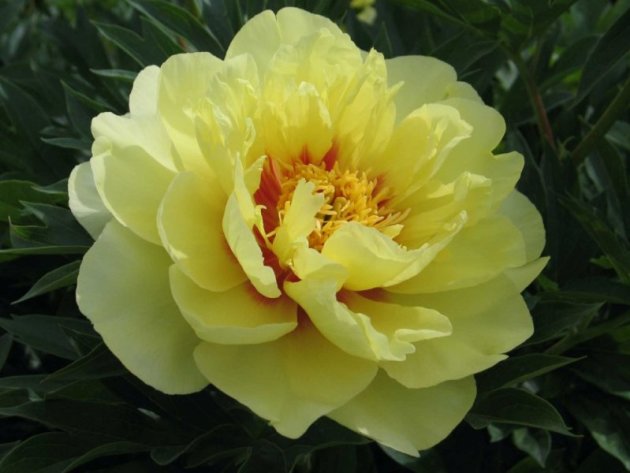

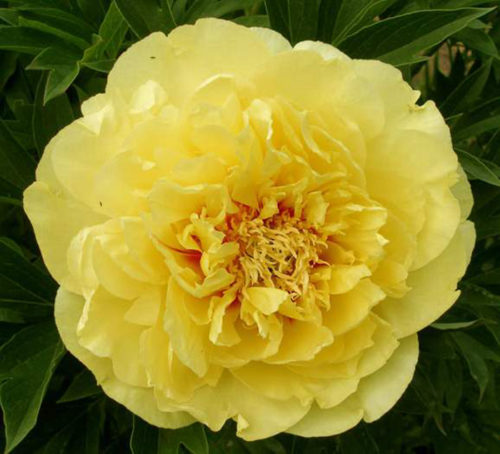
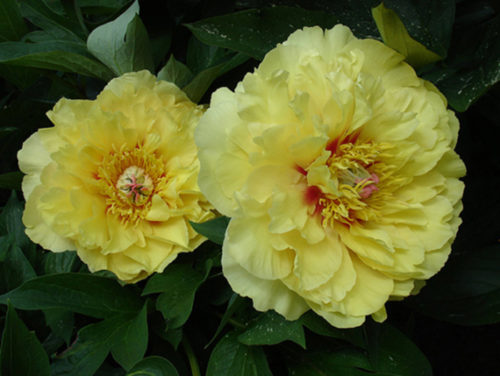

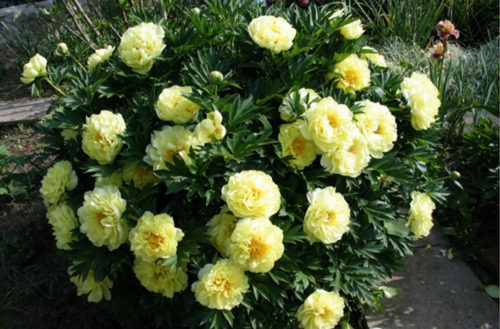
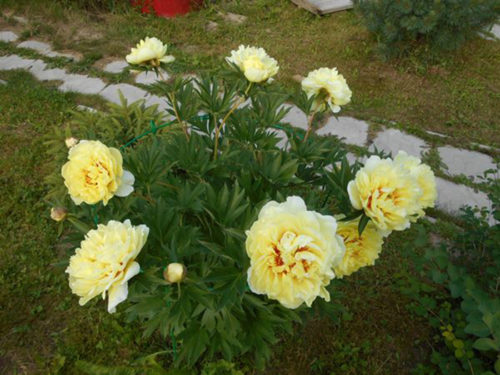
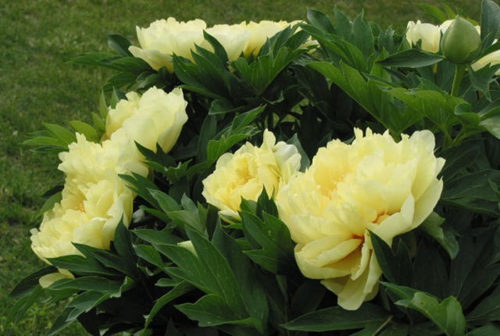
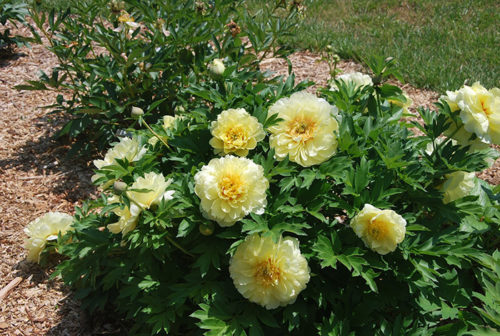


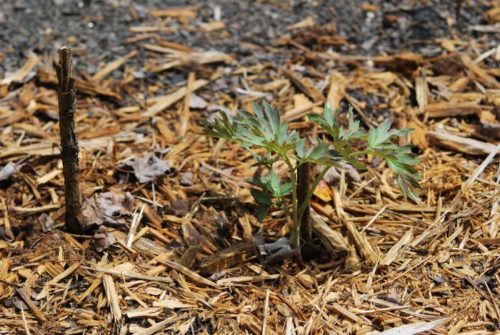
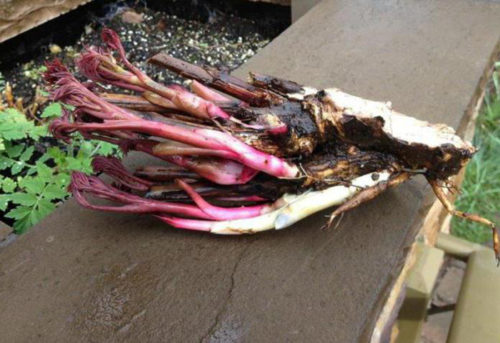
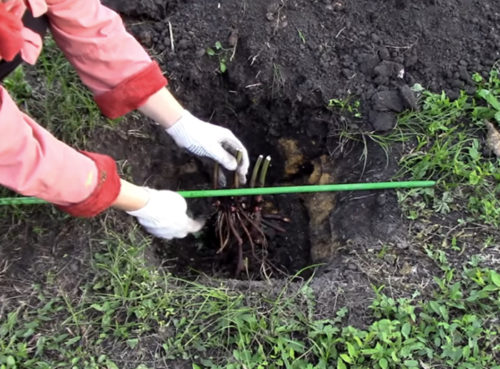
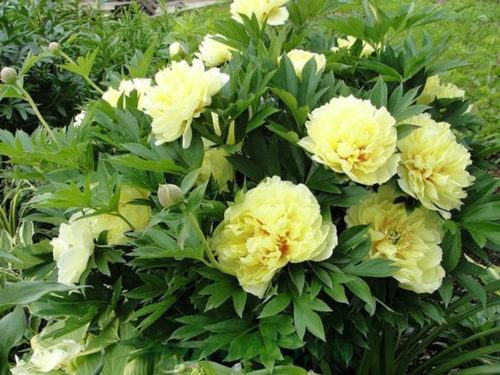












 Start a discussion ...
Start a discussion ...